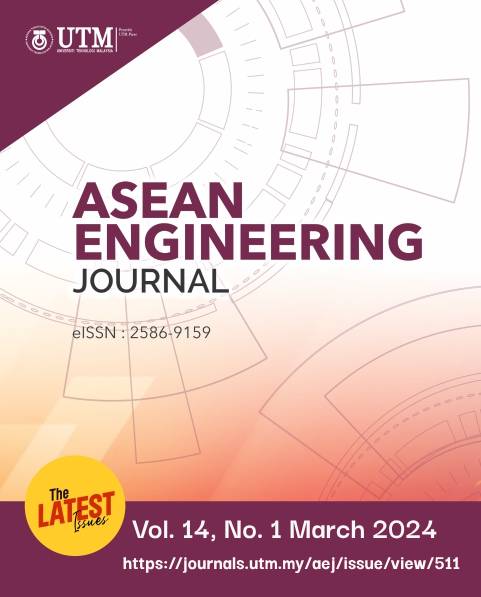ESTIMATING AND ANALYZING COVID-19 TRANSMISSION IN THAILAND THROUGH DEEP NEURAL NETWORK
DOI:
https://doi.org/10.11113/aej.v14.20083Keywords:
COVID-19 pandemic, machine learning, deep neural network, reproduction number, particle swarm optimizationAbstract
The COVID-19 pandemic has caused significant global suffering and mortality, and effective control measures have been elusive. This study aims to develop an accurate and reliable prediction model using deep neural networks (DNN) to estimate the epidemic size and trends of COVID-19 cases, as well as the effective reproduction number, R(t). The efficacy of various control measures for COVID-19 has been questioned, and an efficient prediction model can aid in decision-making and planning. Overfitting is a common issue in neural networks, which can limit their accuracy and reliability. A modified dropout regularization technique and particle swarm optimization (PSO) are employed to enhance the accuracy of the DNN. The proposed model outperforms conventional neural networks and previous studies in terms of accuracy and reliability. The estimated R(t) values are consistent with measured values, which demonstrates the usefulness of this model in analyzing the situation and informing effective intervention strategies. The developed dropout-DNN-PSO model is an accurate and reliable predictor of COVID-19 trends and R(t) values. It can aid decision-makers in planning and implementing effective control measures. The proposed model can be extended to other countries to analyze and predict the trends of COVID-19 cases.
References
Roosa, K., Lee, Y., Luo, R., Kirpich, A., Rothenberg, R., Hyman, J. M., Yang, P., and Chowell, G. 2020. Short-term forecasts of the COVID-19 epidemic in Guangdong and Zhejiang, China: February. Journal of Clinical Medicine. 9(596):13-23. DOI: 10.3390/jcm9020596
Wongsathan, R. 2021. Real-Time prediction of the COVID-19 epidemic in Thailand using simple model-free method and time series regression model. Walailak Journal of Science and Technology. 18(14): 1-11 DOI: 10.48048/wjst.2021.10028
Rahimi, I., Gandomi, A. H., Asteris, P. G., and Chen, F. 2021. Analysis and prediction of COVID-19 using SIR, SEIQR, and machine learning models: Australia, Italy, and UK cases. Information. 12: 1-23. DOI: 10.3390/info12010001
Abolmaali, S., and Shizaei, S. 2021. A comparative study of SIR model, linear regression, logistic function and ARIMA model for forecasting COVID-19 cases. AIMS Public Health Journal. 8(4): 598-613. DOI: 10.3934/publichealth.2021049
Khoojine, A. S., Shadabfar, M., Hosseini, V. R., and Kordestami, H. 2021. Autoregressive model for the prediction of COVID-19 considering the disease interaction in neighboring countries. Entropy. 23: 1-18. DOI: 10.3390/e23010048
Swapnarekha, H., Beher, H. S., Nayak, J., Naik, B., and Kumar, P. S. 2021. Multiplicative Holts Winter model for trend analysis and forecasting of COVID-19 spread in India. Springer Nature Computer Science Journal. 2(416): 1-15. DOI: 10.1007/s42979-021-00614-7
Wongsathan, R. 2023. The logistic growth regression model with the genetic algorithm for predicting the third wave of the COVID-19 epidemic in Thailand. Asia-Pacific Journal of Science and Technology. 28(1): 1-16. DOI: 10.14456/apst.2023.1
Kafieh, R., Arian, R., Saeedizadh, N., Amini, Z., Serej, N. D., and Minaee, S. 2021. COVID-19 in Iran: forecasting pandemic using deep learning. Computational and Mathematical Methods in Medicine. 1-16. DOI: 10.1155/2021/6639466
Wieczorek, M., Siłka, J., Połap, D., Woźniak, M., and Damasˇevičius, R. 2020. Real-time neural network based predictor for cov19 virus spread. Public Library of Science ONE. 15(12): e0244116. DOI: 10.1371/journal.pone.0244116.
Niazkar, H. R., and Niazkar, M. 2020. Application of artificial neural networks to predict the COVID-19 outbreak. Global Health Research and Policy. 5: 1-11. DOI: 10.1186/s41256-020-00177-4
Alamsyah, A., Prasetiyo, B., Hakim, M. F. A., and Pradana, F. F. 2021. Prediction of COVID-19 using recurrent neural network model. Scientific Journal of Informatics. 8(1): 1-6. DOI: 10.15294/sji.v8i1.30599
Priyanka, A., and Kumari, M. S. 2021. Implementation of simple RNN and LSTMs based prediction model for coronavirus disease (COVID-19). IOP Conf Series: Materials Science and Engineering. 1022: 012019. DOI: 10.1088/1757-899X/1022/1/012032
Kumar, R. L., Khan, F., Din S., Band, S. S., Mosavi, A., and Ibeke, E. 2021. Recurrent neural network and reinforcement learning model for COVID-19 prediction. Frontier in Public Health. 9: 1-12. DOI: 10.3389/fpubh.2021.615392
Li, Q., and Lin, R. C. 2016. A new approach for chaotic time series prediction using recurrent neural network. Mathematical Problem in Engineering. 1-9. DOI: 10.1155/2016/8459014
Srivastava, N., Hinton, G., Krizhevsky, A., and Sutskever, I., Salakhutdinov R. 2014. Dropout: A simple way to prevent neural networks from overfitting. Journal of Machine Learning Research. 15: 1929-58. DOI: 10.5555/2627435.2670313
Rosero-Bixby, L., and Miller, T. 2022. The mathematics of the reproduction number R for COVID-19: A primer for demographers. Vienna Yearbook of Population Research. 20: 143-166. DOI: 10.1553/populationyearbook2022s143
















